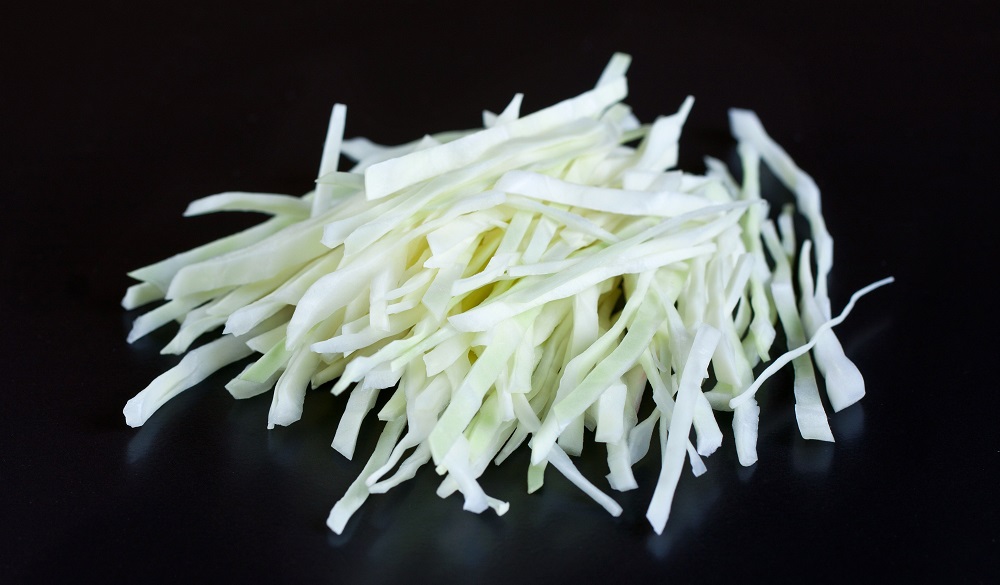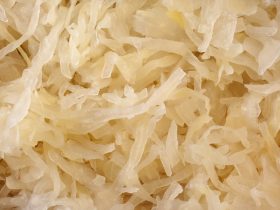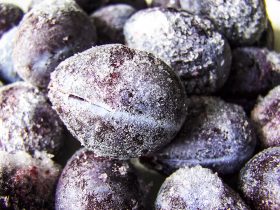Cabbage, a close cousin to Brussel sprouts, is most often found to be a green leafy vegetable in the shape of a layered sphere. Cabbage may also present the colors of white or violet as well as a more tubular shape, depending on the particular species.
Owing to the unwieldy shape of cabbage in its natural form, many dishes elect to use shredded or diced cabbage as an ingredient. Considering the size of most cabbages, it is no stretch of imagination to realize that an excess of shredded cabbage may be left in need of preservation.
Yes, cabbage in its shredded form can be frozen, perhaps even more efficiently than if it were whole. According to a research assay performed by the U.S. Department of Agriculture, cabbage is, on average, 92.2% water1. This causes the whole cabbage leaves to form sludge when frozen, though this effect is mitigated somewhat by shredding the cabbage.
Can Shredded Cabbage be Kept at Room Temperature?
Providing that your cabbage has been kept in an adequate manner from where you purchased it, cabbage should last an approximate two days on your countertop.
In the case of shredded cabbage however, it is best to consume the cabbage within a day of cutting it, as any longer may prove harmful to eat.
If you are unsure when exactly you have purchased your cabbage, it is best to inspect it for signs of spoilage before using it.
Can Shredded Cabbage be Refrigerated?
Far safer than simply leaving the shredded cabbage out on your counter, choosing to refrigerate your shredded leaves should keep them in an edible condition for up to ten days.

In order to refrigerate your shredded cabbage, simply place in an air-tight container free of excess moisture. Make certain that the cabbage is not being crushed by overcrowding within the container.
Equipment Needed for Storing Shredded Cabbage
If taking the most straight-forward route, all that is needed to freeze your shredded cabbage is a baking tray, tissue paper or wax paper and a resealable air-tight container or bag.
Otherwise, should you wish to extend the stability of your cabbage for as long as possible in the freezer, a bowl of ice water as well as a cooking pot and stove will be required.
Regardless, either option will of course require a freezer capable of reaching 32°F or lower.
Optionally Blanching the Cabbage
This step is entirely optional, and may compromise the texture of the cabbage. On the other hand, it will also extend the shelf-life of the leaves drastically.
Prepare a bowl of ice-water. Place a pot of water on the stove and bring to boil. As the water is heating up, divide the cabbage into quarters. Submerge the quarter pieces beneath the boiling water for approximately ninety seconds.
Immediately place the cabbage in ice-water, cooling it off rapidly.
This step will both slow down enzymatic action as well as disrupt any microbiological activity that may be taking place on the leaves.
After cooling, shred as necessary.
Freezing the Shredded Cabbage
Whether you have chosen to blanch your cabbage or not, spread the shredded leaves evenly on your lined baking tray, doing your best to prevent large clumps of cabbage from forming. This will make defrosting your cabbage much easier.
Place the tray uncovered in the freezer for approximately five hours, before removing the cabbage from the tray and placing in your resealable plastic container.
Ensure that your shredded cabbage has been thoroughly dried before initially freezing them. This can be done by first placing the shredded cabbage in a tissue-lined bowl and tossing lightly.
Stored in this manner, shredded cabbage will last up to eight weeks without blanching, and several weeks longer with blanching.
How is Freezing Shredded Cabbage Different from Freezing Whole Cabbages?
Storing whole cabbages in the freezer can prove challenging both because of their size and because of the difficulty in washing them. As cabbages are grown on farms, it is likely that insects and bacteria-laden dirt will be present amongst the leaves, hastening the spoilage of your produce.
Apart from this, shredded cabbage is less likely to liquefy and suffer from compromised taste after freezing due to the fact that water is lost when dried in smaller parts.
Shredded Lettuce Signs of Spoilage
Owing to their high water content, it should be immediately apparent when cabbage has begun to spoil. Most often, a putrid smell will emanate from the leaves, and a dark sludge may be visible2. Should you notice any of these characteristics, dispose of the vegetable immediately.
Occasionally, the cabbage may have grown dry and stale. Though this is not a sign of spoilage, the cabbage may be unappetizing in its raw form. It is best to use cabbage that has dried out for dishes like shakes or sauces.
Extra Information
While blanching your cabbage is optional, choosing to do it should depend on the time frame of preservation you wish to achieve.
As shredded cabbage that has not undergone blanching will last eight weeks in the freezer, if you wish to store the cabbage for longer than this period, it is best to blanch the leaves beforehand.
Keep in mind that blanching will accelerate the degradation of texture that cabbage undergoes when frozen, so blanching acts as a trade-off between quality and time.
Pre-shredded Cabbage from Supermarkets
Occasionally, supermarkets will sell pre-shredded bags of cabbage. While the preservatives used in these bags depends on the manufacturer, it is still a good idea to freeze the produce in the event that you do not consume it all.
If the pre-shredded cabbage comes packaged with other assorted vegetables like carrots or broccoli, this article may not be entirely applicable, as these vegetables have different shelf-lives and preservation procedures from cabbage.
References
1. Unknown Author. (January 2019) Cabbage, raw U.S. Department of Agriculture https://fdc.nal.usda.gov/fdc-app.html#/food-details/169975/nutrients
2. Margaret Barth, Thomas R. Hankinson et al. (2009) Microbiological Spoilage of Fruits and Vegetables. Compendium of the Microbiological Spoilage 135 of Foods and Beverages DOI 10.1007





Hi, I'm Dom
Dom Eats was started to help other people fall in love with food. While cooking can feel intimidating, it doesn't have to be.